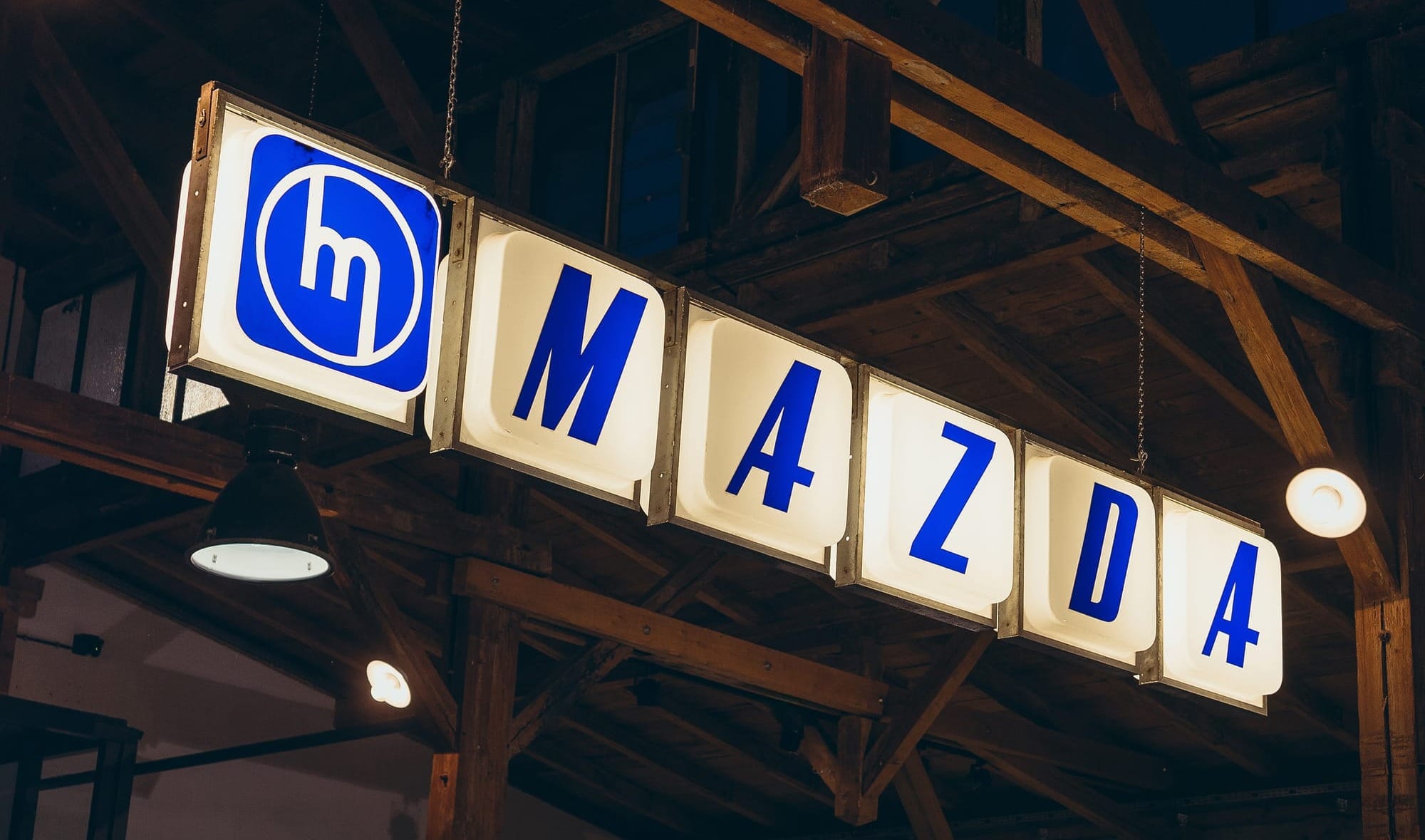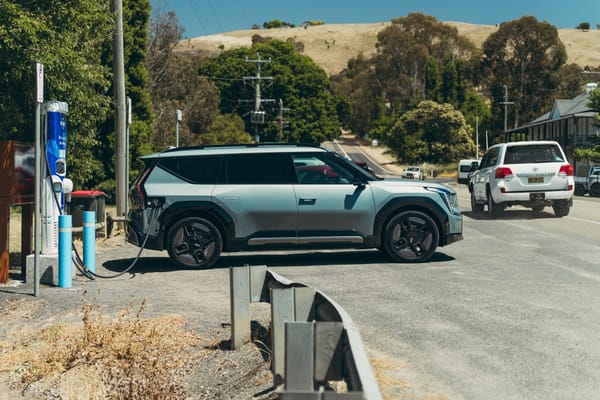I travelled with the Mazda Australia team this week to assess their new large CX-80 SUV in Munich, ahead of its November launch in the Aussie market.
Trips like this usually come with a bit of a 'junket' element, with a visit to this or that special site. Often, it's a famous landmark – but this time, it was a landmark that might only be famous to the Mazda heads around the world.
Walking into the Frey family's Mazda Classic museum was quite the treat, as we were greeted by classic after classic.

The family's first purchase for what would quickly become a collection was the sparkly red 1962 R360 above.
They bought it from a fella in Sydney, Australia, about 40 years ago – and it comes with quite the origin story. According to one of the family's sons, now an older gent himself, they'd bought it on the promise that it was the best-condition R360 on the market. It arrived in Munich with the beautiful respray it wears now – but the interior was largely stripped, and its engine was in the cabin, partly disassembled.
"You told us it was in the best condition," the family said over the phone, all the way to Australia. "It is," the bloke is said to have replied – "have you seen one in better condition?" Touché... 😂
The second addition to the collection – which now numbers over 150 vehicles, rotating in and out of the 57-car museum – was the drool-worthy Cosmo below.
One of the Frey brothers remarked that when they bought this rotary-powered coupe in America, it was seen simply as an 'old car' like any other, not worth much. These days, they can fetch over US$100,000 in decent condition – with the highest recorded sale going for US$264,000.
The museum hosts a beautiful black 1990-96 fourth-gen Cosmo, too, but I neglected to snap that one.




Reverse course back to the start of the museum, however, and you'll find this pair of first-generation RX-7 coupes in race trim, mounted to a curved section for a little extra drama. 👇
Such a shame the RX-7 isn't still in the Mazda line-up, but there's hope that a so-called RX-9 could appear in the coming years...






A couple of classic SA22C RX-7 coupes in full race trim. Get at it!

Another of my favourites was this K360, a rad little three-wheeler introduced in 1959.
I don't know much about the model line, but the Frey family tell me the colour of this one was inspired by a toy car that one of the museum workers had on their desk. Neat. It's also the exact vehicle shown on the model's Wikipedia page!





Speaking of three-wheeled Mazdas, the K360 is actually the successor to the Mazda-Go – a model based on a motorbike platform.
Workers at the museum mentioned a connection to Harley-Davidson, but I can't find anything about that online.
Whatever the case, I do know that the Mazda-Go was the first-ever model produced under the Mazda brand, named not only for one of its founders (Jujiro Matsuda), but also – conveniently – Ahura Mazda, the god of harmony, intelligence and wisdom from the earliest civilisation in West Asia.






Of course, no Mazda museum would be complete without the brand's own gullwing supercar (😂), the Autozam AZ1.
The AZ-1 is a mid-engined kei car built under one of Mazda’s now defunct sub-brands, Autozam, for a very short run between 1992 and '94.
Known for its unique combination of compact design and super distinctive gullwing doors – quite an exotic treat in this market segment, as was the mid-engined layout – the AZ-1 was powered by a tiny Suzuki-supplied 657cc turbo petrol engine that produced 47 kW (64 hp), adhering to Japan’s strict kei car regulations. That's not loads of power, but at a mere 720kg, it's just about enough.


The low-slung AZ-1 is revered for its handling, lightweight construction, and striking supercar-like style – if in a somewhat 'chibi' form factor.
- The AZ-1’s gullwing doors were inspired by high-end sports cars like the Mercedes-Benz 300SL.
- It was originally a concept developed by Suzuki, which later partnered with Mazda to bring it to market under the Autozam brand.
- Fewer than 4,400 units were produced, making it a rare collector’s item today. And I happen to be mates with an owner!

I must admit, though, my favourite on show was the first-gen Mazda Porter Cab. I'd seen a few online, but never up close!
You can't tell me those little robot eyes for headlights aren't super cool. 👇



(Thumbnail shows the earlier B360)
Another piece of Australiana in the collection was this Roadpacer, another 'Mazda' I hadn't yet seen in the flesh.
Known in Australia as the Holden Premier – a high-grade version of the iconic Kingswood – this big sedan was imported into Japan to be Mazda's big family sedan.
Appropriately powered in Australia by an inline six or a V8, Mazda's cars were shipped without an engine or transmission, and were instead powered by a little ol' 1.3-litre rotary engine making just 100kW and a lowly 186Nm – barely enough for the 1600kg Roadpacer to have kept pace with anything else on the road.
Apart from that minor detail, the Roadpacer was fairly luxuriously fitted out in the cabin, given its role as a rival to the iconic Toyota Century, along with the Nissan President and GM-influenced Mitsubishi Debonair.
Incidentally, this is yet another Frey-owned car starring on Wikipedia!



Lastly, here's a sample of the incredible classic German-market ads the museum has displayed on its walls.







Cheers for visiting!
Mike Stevens
writer x photographer x designer










Member discussion